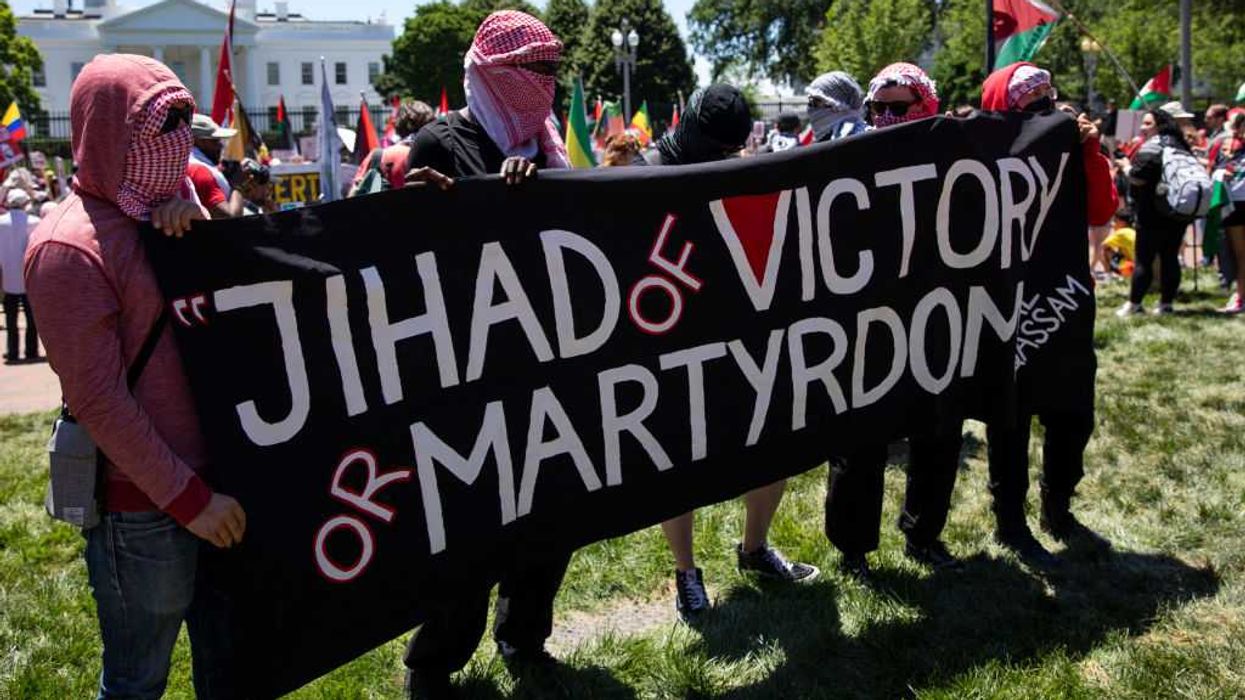Bari Weiss just dropped the fifth installment of "The Twitter Files" with the latest bombshell: that Twitter’s former CEOs Jack Dorsey and CEO Parag Agrawal ignored Twitter's review board, who concluded Trump did NOT violate Twitter’s “incitement” rules.
Trump makes his last appearance on Twitter before permanent suspension
In the aftermath of the Capitol Riots, Trump tweeted what would become his last two tweets before his account was suspended. On January 8, 2020, Trump tweeted his last two tweets in the aftermath of the Capitol riots. At 8:46 am, Trump tweeted, “The 75,000,000 great American Patriots who voted for me, AMERICA FIRST, and MAKE AMERICA GREAT AGAIN, will have a GIANT VOICE long into the future. They will not be disrespected or treated unfairly in any way, shape or form!!!”
The 75,000,000 great American Patriots who voted for me, AMERICA FIRST, and MAKE AMERICA GREAT AGAIN, will have a GIANT VOICE long into the future. They will not be disrespected or treated unfairly in any way, shape or form!!!
— Donald J. Trump (@realDonaldTrump) January 8, 2021
At 9:44 am, Trump tweeted, “To all of those who have asked, I will not be going to the Inauguration on January 20th.”
To all of those who have asked, I will not be going to the Inauguration on January 20th.
— Donald J. Trump (@realDonaldTrump) January 8, 2021
Several hours later, 300 Twitter employees signed an open letter to then-CEO Jack Dorsey, which was published by the Washington Post, calling for Twitter to ban Trump’s account on the grounds of incitement. The letter went so far as to say Twitter would be complicit with “insurrection” if the platform didn’t take further action and ban Trump’s account: “We must examine Twitter’s complicity in what President-Elect Biden has rightly termed insurrection.”
Twitter's review team finds Trump NOT guilty of inciting violence
Twitter's review team began its internal review of whether Trump’s tweet merited incitement, and, to say the least, they weren’t convinced. One staffer wrote, “I think we’d have a hard time saying this is incitement.”
12. But the Twitter staff assigned to evaluate tweets quickly concluded that Trump had *not* violated Twitter’s policies.“I think we’d have a hard time saying this is incitement,” wrote one staffer.
— Bari Weiss (@bariweiss) December 12, 2022
Another employee agreed, “Don’t see the incitement angle here.” Similarly, the team found Trump’s tweet about “American patriots” was referring to “the people who voted for him” rather than the “terrorists” on January 6.
“I think we’d have a hard time saying this is incitement.”
14. Another staffer agreed: “Don’t see the incitement angle here.” pic.twitter.com/6mbUU2Tma0
— Bari Weiss (@bariweiss) December 12, 2022
Twitter policy official Anika Navaroli agreed with the team's review, concluding, “I also am not seeing clear or coded incitement in the DJT tweet [...] I’ll respond in the elections channel and say that our team has assessed and found no vios [violations] for the DJT [Donald J. Trump] one.” Navaroli subsequently notified the respective Twitter execs that “Safety has assessed the DJT Tweet above and determined that there is no violation of our policies at this time.”
"There is no violation of our policies at this time."
16. She does just that: “as an fyi, Safety has assessed the DJT Tweet above and determined that there is no violation of our policies at this time.” pic.twitter.com/wMQ68Hu2xA
— Bari Weiss (@bariweiss) December 12, 2022
Bari Weiss pointed out Navaroli went on to testify before the House January 6 committee several month later, defending Twitter’s decision to ban Trump’s account.
“For months I had been begging and anticipating and attempting to raise the reality that if nothing—if we made no intervention into what I saw occurring, people were going to die,” Weiss wrote. Apparently, Navaroli wasn’t convinced that Trump’s account posed a threat when she recommended that his account remain active to Twitter’s higher-ups.

Twitter execs immediately try to find ways to interpret Trump's tweets as "incitement"
Within minutes of Navaroli’s recommendation, Twitter’s higher-ups began looking for ways to interpret Trump’s tweets as “incitement.” Less than 9 minutes after Navaoli’s initial recommendation, Vijaya Gadde, Twitter’s Head of Legal, Policy, and Trust, asked whether Trump’s tweet could be interpreted as a “coded incitement to further violence.”

A few minutes later, Twitter’s Scaled Enforcement Team (SET) said Trump was, in fact, praising the “rioters” as “American patriots” rather than “the people who voted for him,” totally disregarding the previous recommendation from the review team. SET said that this interpretation could merit Trump guilty of “glorification of violence.”
27. A few minutes later, Twitter employees on the “scaled enforcement team” suggest that Trump’s tweet may have violated Twitter’s Glorification of Violence policy—if you interpreted the phrase “American Patriots” to refer to the rioters. pic.twitter.com/Wszq4zBqnW
— Bari Weiss (@bariweiss) December 12, 2022
Twitter employees compare Trump to Hitler and Twitter's refusal to ban Trump to being a "Nazi following orders"
SET members went so far as to “view him as the leader of a terrorist group responsible for violence/deaths comparable to Christchurch shooter or Hitler and on that basis and on the totality of his Tweets, he should be de-platformed.” Twitter exec Yoel Roth says that Twitter’s refusal to ban Trump’s account equates to “Nazis following orders.”
Trump is a "leader of a terrorist group responsible for violence/deaths comparable to Christchurch shooter or Hitler."
Within two hours, Twitter execs hosted a 30-minute all-staff meeting in which then-CEO Jack Dorsey and Vijaya Gadde, Twitter’s former general counsel and the head of legal, policy, and trust, answered staff questions as to why Trump wasn’t banned yet. One hour after Dorsey requested from Roth and his team “simpler language” to explain Trump’s suspension, he announced Trump’s permanent suspension from the platform.
32. One hour later, Twitter announces Trump’s permanent suspension “due to the risk of further incitement of violence.”
— Bari Weiss (@bariweiss) December 12, 2022
Why did Twitter go against the review team's recommendation?
It’s clear Twitter had one goal in mind and no one with an opposing opinion could deter them from their aim: to permanently remove Trump’s Twitter account and discredit his followers. Even though the review board concluded Trump’s tweets didn’t incite violence, other higher-ups from different teams bent over backward to provide justification to delete Trump’s account.
Even Navaroli, the head of Twitter’s review team, initially concluded Trump’s tweets didn’t merit permanent suspension--and she was no fan of Trump as she testified before the House January 6 committee several months later. However, her review was immediately dismissed by Twitter execs who already set their minds on their desired outcome–to permanently ban President Trump.

Perhaps the most troubling aspect of this story is the fact that Jack Dorsey was complicit in disregarding the review board’s consensus and caving to the overwhelming push from Twitter employees to remove Trump’s account. It's clear they were involved with internal communications to find any possible way of justifying Trump’s ban following the contrary opinion from the review board. Were they also involved in covering up the review board’s opinion and convincing Navaroli to give a contradictory testimony before Congress? As Trump was permanently suspended from other social media platforms like Facebook and Instagram, one can only wonder what efforts their teams went through to suspend the President’s accounts.
As Glenn continues to unravel the scope of Big Tech’s censorship against conservatives, we are only scratching the surface of the ongoing war against freedom of speech. If these big tech platforms have the lion's share of digital communication within the U.S., shouldn’t they be accountable to protect our freedom of speech in digital communication in the same way that written and spoken forms of communication are protected by the first amendment?
It's important to view Big Tech censorship in light of the Great Reset—the vision proposed by globalist elites during the 2020 World Economic Forum to bring about leftist utopia through centralized government expansion at the expense of individual liberty. Censoring opposing voices is a key step in this plan. They have done it to anti-establishment spokespeople, Charlie Kirk and Dan Bongino. If they can do it to Donald Trump, a U.S. President, they can do it to anyone.
We are only scratching the surface of the ongoing war against freedom of speech.
The argument that Twitter, as a private company, can regulate speech as they see fit is increasingly becoming more feeble. The Twitter Files bombshells continue to reveal their censorship is one-directional against conservatives—particularly when Twitter publicly denies censorship, like in 2019 when Twitter published the following:
Our mission is to provide a forum that enables people to be informed and to engage their leaders directly. ... Our goal is to ... protect the public’s right to hear from their leaders and to hold them to account.
Feeling a bit gaslit?

 JIM WATSON / Contributor | Getty Images
JIM WATSON / Contributor | Getty Images
 Joe Raedle / Staff | Getty Images
Joe Raedle / Staff | Getty Images AASHISH KIPHAYET / Contributor | Getty Images
AASHISH KIPHAYET / Contributor | Getty Images Harold M. Lambert / Contributor | Getty Images
Harold M. Lambert / Contributor | Getty Images